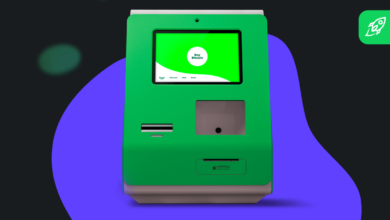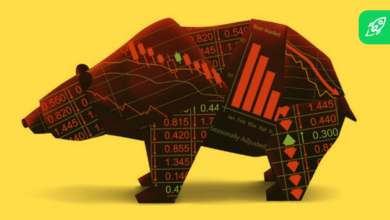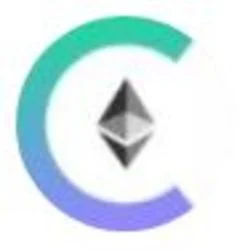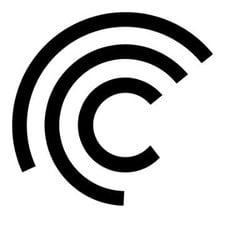Kusama (KSM) Review

Have you ever heard about Polkadot? As one of the most innovative crypto projects of the last decade, it has certainly been talked about a lot ever since it was announced. Polkadot is famous for a good reason – its developers have come up with possibly the most elegant solution to the age-old crypto issue of scalability – parachains.
What is Kusama? It is Polkadot on steroids. It was launched in May 2019 as a parallel of the Polkadot network – the two have (nearly) the same code base and the same structure. The main difference between these two networks is speed, with Kusama allowing developers to deploy both new projects and updates to existing ones much faster than Polkadot.
As Polkadot’s testing grounds, Kusama is treated by many as nothing more than a testnet, a sheltered and puny sibling that is always destined to be in its cousin’s shadow – but that’s not the case at all.
There are a lot of projects that are more than happy to never move on and stay on the Kusama network, seduced by its high deployment speed and all the diverse innovative projects that get launched on it.
KSM is Kusama’s native token that has a wide variety of different uses on the platform. Its holders can validate transactions, nominate validators, participate in network governance, and more.
The Intended Use for Kusama
Kusama was intended to be the proving grounds of the Polkadot network, a platform for developers to test out its governance, staking, validation, and nomination functionality in a real environment.
Kusama lets developers play around with the code, allowing them to realize their wildest ideas or try and break their own projects to see if there are any critical vulnerabilities. Polkadot’s future upgrades are usually deployed on Kusama first, allowing parachain/parathread devs who deploy their projects on both networks to see how the update will affect them.
How Does Kusama Work?
Kusama works the same way the Polkadot blockchain does, but it is much faster.
Although it is considered by many to be nothing more than a glorified testnet, Kusama is a fully-functional blockchain network that has its own governance and token.
The Kusama network gives users access to a whole bunch of key innovations such as on-chain governance, forkless on-chain updates, and cross-chain message passing (XCMP). Kusama’s governance has been designed to be fully decentralized and permissionless, and everyone who holds KSM tokens gets to have a say in the project’s future. This promises longevity for the platform – it will continue functioning and evolving for as long as there is a dedicated community.
Just like Polkadot, the Kusama network is composed of two types of chains.
This is the main Kusama blockchain and is where all transactions are finalized. The relay chain uses a process called parallel processing to process transactions from all of the chains in the ecosystem at the same time for maximum scalability.
Custom blockchains created and deployed by individual developers or developer teams. They use the relay chain’s computing resources to confirm transactions. Parachains are specialized and interconnected, creating a fully functional and thriving ecosystem of blockchain projects.
Parachains are famous for their high interoperability: transferring data between different ones is as smooth as butter. The Substrate blockchain framework helps developers to speed up and simplify the processes of creating and maintaining their parachains, which makes the technology more accessible.
User Roles on Kusama: Who Is Who
As Kusama is meant to let users try out Polkadot’s various features, user roles on both networks are very similar.
Builders
Builders are the users that create parachains, parathreads, and other features on the network.
Network Maintainers
Just like Polkadot, Kusama uses 4 types of network maintainers.
Nominators
Nominators secure the relay chain by choosing trusted validators and staking KSM. They can delegate their tokens to validators who they think will act in a proper and reputable way, essentially voting for them. In return, they get a certain portion of the block rewards earned by the validators they have chosen.
Collators
Collators create blocks on parachains that contain up-to-date transactions. They are required to stake KSM tokens to connect the parachain to the relay chain.
Validators
New validators are chosen every 24 hours. They are responsible for maintaining the health of the network by adding new blocks and cooperating with other validators by reaching a consensus with them. Validators also decide which of the blocks created by collators are the most accurate representation of the parachain.
Governance actors
Governance actors are the users that are responsible for choosing what direction Kusama will go in the future.
The Kusama Governance Process
Kusama’s governance actors are responsible for helping the network evolve and move forward. They can vote for or against various protocol and codebase changes. Additionally, anyone that possesses a minimum amount of KSM tokens can propose their own changes.
There are three branches to the governance process on Kusama: the referendum chamber, the council, and the technical committee. All three can submit proposals that can lead to changes on the network.

Voting is done every 8 days, and the proposal that gets voted on is the one that has the most KSM bonded to it. The technical committee can also make emergency proposals, which will be voted on if they have 2/3 of the technical committee and 3/4 of the council’s support.
Voting is stake-weighted, so any KSM holder can participate in it. Kusama utilizes a system called Adaptive Quorum Biasing, which determines how hard a proposal should be to pass depending on the number of voters present and who it was submitted by. If the turnout for a referendum (the voting event) is low, then voters would need to achieve a supermajority to either pass or reject it. If the turnout is normal, then just a simple majority would suffice.
The Referendum Chamber
The referendum chamber is composed of all KSM holders. This is the branch that submits public proposals and votes on them.
The Council
The council is composed of 13 members who are elected by the members of the referendum chamber every 24 hours. They represent the passive members of the Kusama network.
The Technical Committee
The technical committee members are elected by the council. These are usually various developers or dev teams that actively work with the Kusama network. They are tasked with determining how important each proposal is.
The council and the technical committee can also choose to fast-track some proposals that they think are extra crucial to the development of the network. This allows critical changes to come about quickly no matter how much KSM is bonded to them.
The Kusama Treasury
The Kusama treasury is, well, a treasury of all the funds collected from various sources like transaction fees, staking inefficiencies, slashing penalties, and so on. The funds in the treasury are used to realize proposals voted on by KSM holders.
Parachains and Parathreads
Parachains and parathreads are the bread and butter of Kusama and Polkadot, they’re what makes these networks unique and so amazing.
Wait, parathreads? Aren’t Kusama and Polkadot all about parachains? What are these weird threads?
Well, parathreads are rather similar to parachains. In fact, from a technological point of view, there’s pretty much no difference between the two. Both are blockchains that can be connected to the Kusama network’s relay chain, and rely on the network’s Layer-0 security. Each parachain requires its own slot that can be purchased via an auction.
That’s where the difference between parathreads and parachains lies: the slots for the former are not acquired via an auction, but instead have a fixed registration fee. Parathreads are multiple chains that share a single parachain slot.
Parachains On the Rococo Testnet
Rococo is the actual testnet of the Polkadot network. But why would anyone use it if Kusama exists, you may ask?
Well, while Kusama is meant for developers to try out Polkadot features and parachain deployment, it is still a separate mainnet. Not only does it allow users to test the full Polkadot functionality, but it also is a separate and independent blockchain that has its own token and governance.
Meanwhile, Rococo is a testnet and was made specifically for testing parachain functionality.
Kusama Parachain Auctions
Parachain slots on both the Polkadot and Kusama networks are limited. Because of that, the project had to develop a system for distributing them – and they went with a (slightly modified version of) candle auction.
Candle auction is a type of auction where bidders name/submit increasingly higher prices and the highest number at the conclusion of the event is considered to be the winner. Just like the name suggests, the auction is concluded once a lit candle goes out.
When such auctions are used online, instead of a candle, they require a random number to be generated. However, parachain auctions on Kusama are slightly different: they have an open phase when bids can be submitted, but the end of the auction is decided retroactively and is thus not known to bidders. This prevents auction sniping and creates a fair and just auction environment.
Parachain auctions are not the only way to acquire slots: it is possible to buy them in a secondary market from developers who won a slot but don’t want to use it. Additionally, developers can choose to deploy a parathread instead.
The Difference Between Kusama and Polkadot
Although the two are quite similar, there are still many differences between Polkadot and Kusama. The two are like siblings: Polkadot is the preppy college student spending their days in a lab, while Kusama is its edgier yet equally brilliant cousin that carries out experiments in their own garage.
Here’s an overview of the key differences between the two projects:
| Polkadot | Kusama |
| +High Stability | +Low barriers to entry for parachain deployment |
| +High Security | +Low bond requirements for validators and parachains |
| +More conservative governance and upgrades | +Low slashing penalties |
| +High validator reward | +Fast iteration |
| Use cases | Use cases |
| Enterprise and B2B applications | Early-stage startup network |
| Financial applications | Experimentation on new ideas |
| Upgrade path for early-stage applications | Pre-production environment for Polkadot |
| High-value applications requiring bank-like security, stability, robustness | Applications that don’t yet require bank-like security and robustness |
Kusama is essentially an unaudited version of the Polkadot network – as a result, its code can contain critical errors and vulnerabilities. On the other hand, there are fewer rules, and governance parameters are a lot less stringent.
Deployment on Kusama is both faster and cheaper than on Polkadot, true to its nature of being a testing ground.
The on-chain governance process on the Kusama network is about 4 times faster than that on Polkadot: 8 days vs. 28. There are also lower minimum staking requirements.
As you can see, all the differences are aimed at making Kusama easier, cheaper and faster to use. It lets developers have a piece of the pie for a much smaller price, getting access to Polkadot’s cutting-edge technology at the fraction of resources invested.
The only downside is less security and stability, but a few bumps on the road are to be expected from a network that values innovation quite so much. That said, Kusama is still perfectly safe – just not as much as its cousin.
The Kusama network is perfect for projects that require high transaction throughput but not the highest level of security like some social networking and gaming apps.
Final Thoughts
Kusama is a lot more than just proving grounds for its cousin Polkadot – it’s a fully independent and functional blockchain that provides all the same benefits Polkadot does.
Kusama’s sandbox nature attracts a lot of innovators and, coupled with the excellent cross-chain communication capabilities the network has, this makes it perfect for users and developers who want to surround themselves with the latest cutting-edge blockchain and crypto technology.
KSM is also a fully independent token. Its high market cap and price show that KSM is here to stay and that both users and investors alike are willing to put their trust in it. As both Polkadot and Kusama develop, their tokens, DOT and KSM, are sure to rise even further, too.
Polkadot’s and Kusama’s developers and creators, including Gavin Wood, think that there’s no single blockchain that can effectively satisfy all the needs users may have – they believe that in order to combat the issue of scalability, true interoperability has to be achieved. Both Kusama and Polkadot aim to create a space where a wide range of different blockchains can seamlessly communicate and cooperate with each other.
FAQ
How can I get Kusama (KSM)?
KSM token is available for both purchase and exchange on a wide range of different crypto exchanges, including Changelly.
Additionally, KSM can also be claimed. In order to claim Kusama tokens, you need to have held the DOT indicator token at the time of the genesis block of Kusama – if you did, you are entitled to claim the equivalent amount of KSM tokens.
Learn more about the claiming process here.
Please remember that before you buy Kusama tokens, you will need to get a crypto wallet that supports KSM.
Where can I trade KSM?
Almost one year ago, Binance opened trading for the KSM/BNB, KSM/BTC, and KSM/BUSD trading pairs. Alternatively, you can trade KSM’s cousin DOT on our beginner-friendly trading platform Changelly PRO.
Read our guide on crypto trading if you want to learn more about it.
Is Kusama PoS (Proof Of Stake)?
Not exactly. Kusama uses a slightly modified version of the proof-of-stake consensus called nominated proof-of-stake (NPoS).
Nominated Proof-of-Stake is the process of selecting validators that confirm transactions and participate in the consensus protocol. The more nominators (users that stake KSM and vote on validators) vote for a single validator, and the more KSM tokens there are backing that validator, the likelier it is to be chosen as an active validator.





































































































